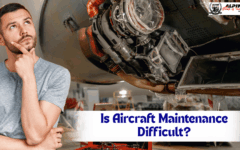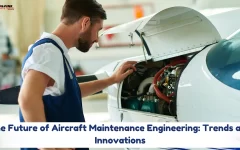What is Covered in the AME B1.1 Syllabus: A Breakdown of Key Subjects
2024-12-23 7:29What is Covered in the AME B1.1 Syllabus: A Breakdown of Key Subjects

What is Covered in the AME B1.1 Syllabus: A Breakdown of Key Subjects
If you’re considering enrolling in the AME B1.1 (Aircraft Maintenance Engineer) course, you’re probably curious about the specific topics and skills you’ll be learning. The AME B1.1 program is a comprehensive and in-depth training course designed to equip aspiring engineers with the necessary technical knowledge and hands-on experience to maintain and repair aircraft. The syllabus is structured to cover essential areas, such as aircraft engine maintenance, airframe systems, troubleshooting, and more, ensuring that graduates are ready to work on various aircraft systems.
1. Fundamentals of Aircraft Maintenance
Overview:
Before diving into the technical aspects of aircraft systems, the course begins with a foundation in aviation principles and the fundamentals of aircraft maintenance. You’ll learn the basic concepts that underpin all aspects of the aviation industry.
Key Topics Covered:
- Introduction to Aviation: Learn about the evolution of aviation, the roles and responsibilities of AMEs, and the importance of aircraft maintenance in ensuring air safety.
- Aviation Regulations and Standards: Familiarize yourself with international aviation standards, including ICAO (International Civil Aviation Organization), FAA (Federal Aviation Administration), and DGCA (Directorate General of Civil Aviation) guidelines, which govern airworthiness and maintenance practices.
- Aircraft Types and Classifications: Understand the different types of aircraft (fixed-wing, rotary-wing, commercial, military, etc.) and the maintenance protocols for each.
Practical Aspects:
You’ll be introduced to aviation safety protocols and learn how to maintain accurate records for inspections, repairs, and modifications.
2. Aircraft Powerplants (Engines)
Overview:
One of the most critical aspects of the AME B1.1 course is the study of aircraft engines. You will be trained to maintain, inspect, troubleshoot, and overhaul various engine types. This includes jet engines, turbofan engines, piston engines, and turbine engines.
Key Topics Covered:
- Engine Theory: Study the principles of combustion, turbines, compressors, and engine efficiency. Learn how these components work together to power the aircraft.
- Engine Components and Systems: Delve into the major components of engines, such as compressors, turbines, combustion chambers, and exhaust systems.
- Engine Inspections and Overhaul Procedures: Understand the detailed inspection procedures for engines, including non-destructive testing methods, and the process of engine overhaul, repair, and replacement.
- Engine Troubleshooting: Learn how to diagnose and solve mechanical and electronic issues in the engine, including fuel system malfunctions, loss of power, and abnormal engine vibrations.
Practical Aspects:
Hands-on training will involve inspecting and working on real engines, performing routine maintenance tasks, and conducting engine performance tests to assess efficiency.
3. Aircraft Airframe and Structural Systems
Overview:
In addition to power plants, airframe maintenance is a core component of the AME B1.1 syllabus. Airframe systems include the aircraft structure, wings, fuselage, landing gear, and other critical components that give an aircraft its shape, integrity, and ability to fly.
Key Topics Covered:
- Structural Components: Study the various parts of the aircraft’s structure, including the wings, tail section, empennage, fuselage, and landing gear.
- Material Science: Learn about the materials used in aircraft construction, such as aluminum alloys, composite materials, and titanium, and how to inspect for cracks, corrosion, or stress.
- Airframe Inspection and Maintenance: Understand the procedures for conducting airframe inspections, including visual inspections and the use of non-destructive testing (NDT) techniques to check for structural integrity.
- Landing Gear and Hydraulic Systems: Learn about the operation and maintenance of landing gear systems, shock absorbers, and hydraulic brakes.
Practical Aspects:
You’ll be taught to handle airframe inspections on live aircraft, repair minor structural damages, and perform modifications in compliance with airworthiness standards.
4. Aircraft Systems and Components
Overview:
Aircraft systems are the lifeblood of any aircraft, and understanding how these systems function is essential for AMEs. This section of the course covers systems that control flight, power distribution, and the overall functioning of the aircraft.
Key Topics Covered:
- Electrical and Power Systems: Study the electrical generation, distribution, and storage systems, including aircraft batteries, alternators, and power distribution units.
- Hydraulics and Pneumatics: Learn the operation and maintenance of hydraulic systems used in flaps, brakes, landing gear, and flaps. The course also covers pneumatic systems used for pressurization and air conditioning.
- Fuel and Lubrication Systems: Understand the design and maintenance of fuel systems, including pumps, tanks, and filtration systems. Learn how to check for fuel leaks and perform fuel system troubleshooting.
- Flight Control Systems: Learn about control surfaces such as ailerons, elevators, and rudders, and how they are controlled through mechanical, hydraulic, and electronic means.
Practical Aspects:
Practical training in troubleshooting common issues in aircraft systems, performing routine maintenance on electrical, fuel, and hydraulic systems, and ensuring the efficiency of these systems.
5. Troubleshooting and Diagnostics
Overview:
Troubleshooting is one of the most critical skills an AME B1.1 engineer must master. This module teaches you how to identify, diagnose, and resolve mechanical and electrical issues on an aircraft.
Key Topics Covered:
- Systematic Troubleshooting: Learn the process of troubleshooting step-by-step, starting from reading diagnostic codes (in the case of electronic systems) to conducting physical inspections of components.
- Fault Detection and Diagnosis: Develop the skills to detect faults in engines, airframe components, and other systems, utilizing both manual methods and automated diagnostic equipment.
- Corrective Actions: Once a problem is identified, you will be taught to perform corrective actions, including repairing, replacing, or recalibrating components.
Practical Aspects:
Hands-on troubleshooting exercises, often on real or simulated aircraft, to simulate real-world scenarios and practice diagnosing and fixing mechanical and electrical failures under time pressure.
6. Safety Standards and Regulations
Overview:
Safety is paramount in aviation, and the AME B1.1 course includes rigorous training in the standards and regulations that govern aircraft maintenance.
Key Topics Covered:
- Aviation Safety Standards: Learn about global and national safety standards and how they apply to aircraft maintenance.
- Airworthiness Directives: Understand the process of checking for and complying with airworthiness directives (ADs), which are issued by aviation authorities when an issue is identified in specific aircraft models.
- Preventive Maintenance and Safety Inspections: Study the procedures for conducting routine inspections, safety checks, and preventive maintenance to ensure aircraft meet safety and airworthiness requirements.
Practical Aspects:
You’ll practice performing routine safety checks and inspections on actual aircraft, ensuring that they meet all regulatory requirements before they are cleared for flight.
7. Documentation and Reporting
Overview:
Maintaining accurate records is crucial for an AME. This section teaches you how to keep detailed logs of inspections, repairs, and modifications.
Key Topics Covered:
- Maintenance Logs and Reports: Understand how to fill out maintenance logs, document inspections, and file maintenance reports.
- Regulatory Compliance: Learn the importance of keeping records in accordance with aviation authority regulations, ensuring airworthiness and safety.
Practical Aspects:
Training on how to maintain accurate records, which will be essential when working in airlines or MROs, ensuring compliance with aviation regulations.
Conclusion
The AME B1.1 course covers a wide range of technical subjects designed to turn you into a proficient and skilled aircraft maintenance engineer. From aircraft engines and structural components to troubleshooting, safety standards, and documentation, this course equips you with the knowledge and hands-on experience necessary to maintain the complex systems that make modern aircraft safe and operational.
Whether you’re performing routine inspections, diagnosing issues, or carrying out repairs, the AME B1.1 syllabus ensures that you’ll be ready to take on the challenges of this demanding and rewarding career. By the end of the course, you’ll have the skills to keep aircraft flying safely, efficiently, and reliably.








